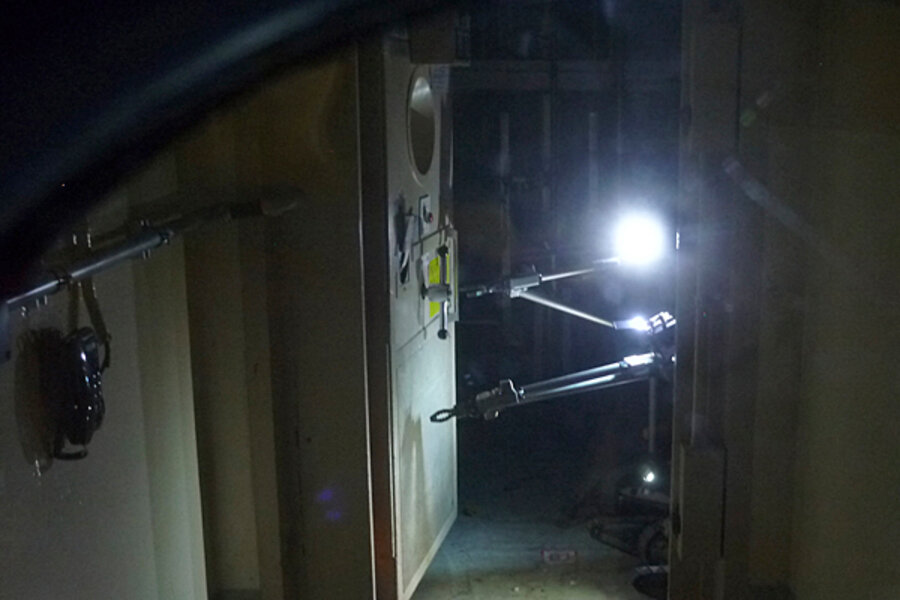Robots throw doubt on 'road map' to control Fukushima crisis
Loading...
Robots prowling inside debris-strewn reactor buildings at the heavily damaged Fukushima Daiichi nuclear power plant detected levels of radiation that throw doubt on whether workers will be able to enter the plant for any extended period of time.
The announcement came Monday, just one day after officials unveiled a six-month "road map" for bringing radioactivity under control. Many experts call the road map a necessary step, but optimistic.
Exploring the first floor of the No.1 reactor building for about an hour, a robot provided by a Massachusetts-based company rolled through doors it opened with
its manipulator arms, detecting radiation leaking at a rate of 49 millisieverts per hour. That means a worker could stay in the building for no more than five hours before reaching the lawful annual limit for nuclear workers of 250 millisierverts.
Later, in a two-hour prowl through the No. 3 reactor, one of the robots ran into debris roadblocks and recorded readings of 57 millisieverts per hour, Japanese broadcaster NHK World reported.
While the readings were not completely unexpected, they confirm the difficulty of the task ahead if the plant's operator is going to bring the damaged reactors, their spent fuel pools, and radioactive releases under control within six months.
Two-pronged plan
The first part of that plan is to bring down radiation levels at the site, in part by restoring steady cooling for the reactors and setting up storage facilities for radioactive water. The second step would be to achieve a "cold shutdown" at the reactor site and vastly lower the amount of contaminated water on site by the six-to-nine-month mark.
At that point, Japan's industry minister Banri Kaieda said Sunday, the government might be able to tell evacuees when they can return home, NHK World reported.
But nuclear experts were wary. "The three-month target is a best-possible scenario," Kazuhiko Kudo, a nuclear expert at Kyushu University, told the Mainichi Daily News newspaper. "It is imperative to install an external system to recycle cooling water as soon as possible."
That's exactly what company officials are trying to do. But the high levels of radiation could delay efforts to set up an replacement for cooling system that shut after the 9.0 earthquake. So could the large quantity of radioactive water on site, which came both from leaks in the containment vessels and water that was sprayed from above when the crisis was at its height.
Officials said Monday that the water was more than 40 feet deep in the basement of the No. 4 reactor building and about 3 feet deep in several other buildings.
Potential dangers of plan
There are other gaps in the plan as written, says nuclear engineer David Lochbaum.
Adding water to the reactor vessels to further cool the damaged uranium fuel rods could have negative consequences, says Dr. Lochbaum, who spent years working in power plants with the same design as the Daiichi plant's reactors. First, it could allow a nuclear reaction to take place again. Second, it would add more water to a structure already carrying a huge load of water in the basement.
To guard against a renewed nuclear reaction, adding boron – a chemical not mentioned in the road map – would be vital, he adds.
And engineers will have to revisit the seismic analysis to see how much water they can add safely.
"The containment was designed to withstand earthquake forces up to a certain level" but may not be able to deal with an aftershock or quake if too much water is added back, Lochbaum writes. "The added weight, coupled with the potential for sloshing during an earthquake, could compromise the structural integrity of the containment."





